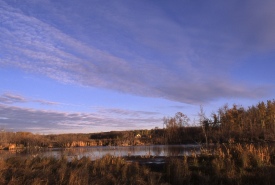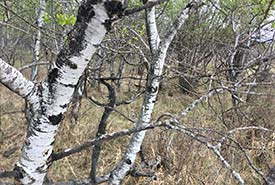It takes an aspen to make a forest

Aspen Parkland in the fall, Saskatchewan (Photo by Don and Karol Dabbs)
They say it takes a village to raise a child, but what if the child and the village were one in the same?
This hypothetical “village” makes its home in forests as the most widespread tree in North America. And while on the surface it might just look like a part of a forest or grove, there’s a lot more to quaking aspens than what we see above the ground.
Most trees reproduce through seed dispersal, taking advantage of natural elements, such as the wind, to carry their seeds in the hopes they fall in a spot suitable for growth. Other dispersal methods by most trees can include water, animals and fire. However, unlike many of its forest neighbours, aspens use a complex underground root system to spread through vegetative (asexual) reproduction.
These root systems stem from a single individual and branch out (pun intended) into sometimes hundreds of trees as clones. These groups are referred to as clonal colonies and can spread upward of 40 hectares for a single individual tree.

Trembling aspen at Asquith property, SK (Photo by NCC)
While quaking aspens can live above ground to well over 100 years old, the root systems can survive far past the individual stems. The root systems can typically live and spread anywhere between 5,000 and 10,000 years, with the oldest aspen colony in the world, affectionally called Pando, thriving in Utah's Bryce Canyon National Park (80,000 years).
Aspens need a lot of sunlight to grow. Through darkness, however, aspens remain resilient. They are often the mark of a young forest, as once slower-growing trees like maple make their way in and block the sun, aspens will die if too shaded. Even when individual stems die, their roots stay alive under the soil. In fact, aspens can lay dormant for over 100 years within their root system. Once there is a sufficient amount of sunlight (if the forest is cleared or if there is a fire, etc.), aspens will sprout up from beneath the surface and begin to grow again.
Aspen root systems are also resilient to forest fires. While some cases of fire can be devastating to forests across Canada, and can be important for providing nutrients and stimulating new growth, aspens are the first species to come back after the smoke clears. Their roots remain safe under ground and trees will pierce through charred ground and begin the forest regeneration process.
It takes only one aspen to make a village. In the face of climate change, this village is put under more stress as temperatures rise and forests dry up. Aspen continue to be the tree that thrives, bringing forests back to life.


